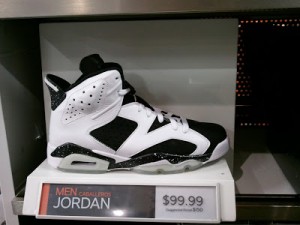I consider myself a bargain shopper, especially when it comes to apparel. Why pay full price when you can just wait for the products to go on sale? Although, there are several other ways that can help you save money. You can sign up for a store’s cashback program, use online or in-store coupons, or even shop for defective products. Now some may be skeptical about purchasing defective products, but in reality you shouldn’t have to worry too much in regards to apparel, unless you are very picky. There are many situations where I would rather purchase a slightly defective item to save a big chunk of change.
As manufacturers produce hundreds and thousands of items, some are bound not to come out perfect. Quality control weaves these defective products from the approved products. From excess glue on a shoe to incorrect stitching on a garment, there are plenty of small details that can be irregular. Now these items don’t necessarily present a hazard to customers, but major retailers such as Nike cannot be seen selling sub-par products in major retailers. That is why they offer these “irregular” or “b-grade” products. You can find a few of them slip past to major retailers, but you mainly find these types of products in outlet stores. Now this scenario would be different in the auto industry, where defective components or products would not be allowed to be sold because of the dangers they may cause.
I bet that many of us have been to and/or shopped at an outlet mall and have seen how much cheaper apparel is compared to full price retailers. “Defective” products that I purchase from outlets (mainly sneakers and sports apparel) usually tend to be just as fine in my opinion. Things are meant to be worn and I believe little nicks do not really affect the overall look/performance of the particular product.
Questions:
Do you guys think these defective/irregular products are worth purchasing in the long run?
Do you think quality control might be too strict when it comes to products like apparel (that do not pose danger)?
Sources:

